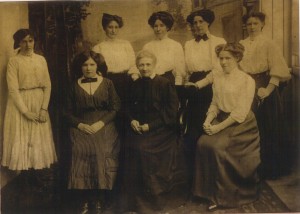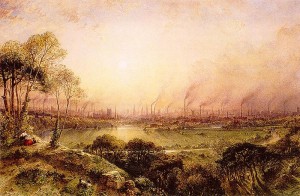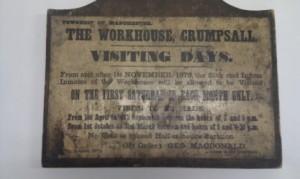 With the centenary of World War I starting this year, I thought it would be a good idea to create a series of blogs about women during the World War I. But I don’t want to do just a generalised history of women at this time. Instead, I am going to use my grandmother and her six sisters to give a more personal viewpoint of what life was like for women before, during and after the war.
With the centenary of World War I starting this year, I thought it would be a good idea to create a series of blogs about women during the World War I. But I don’t want to do just a generalised history of women at this time. Instead, I am going to use my grandmother and her six sisters to give a more personal viewpoint of what life was like for women before, during and after the war.
In future posts, I will take each of the seven sisters one by one, and I believe that each of them will have her own story to tell, and be an interesting example of life for women during this important period in women’s history. I still have research to do on most of them – so you will be following me as I try to find out more about them and their experiences. I will discuss sources used as I go so that anyone searching their own ancestors can follow suit and find out more about
This initial post will give an introduction to the family, and the historical background into which they were born.
The sisters were all born in Manchester in the 1880s and 90s, the daughters of an Irish immigrant, Michael Henry Reid, and his Yorkshire wife, Ann Jepson, the daughter of a Railway Inspector.
 Manchester is of course one of the most significant cities in Britain during the Victorian period. Not only was it a huge centre of industry, with its cotton and other textile mills, iron foundries and railways, but for women, it was the centre of the suffragette movement, as this was where the Pankhursts were born and lived.
Manchester is of course one of the most significant cities in Britain during the Victorian period. Not only was it a huge centre of industry, with its cotton and other textile mills, iron foundries and railways, but for women, it was the centre of the suffragette movement, as this was where the Pankhursts were born and lived.
Michael worked in a mill – but not a cotton mill. He worked in Manchester’s paper mill as a paper ruler, as did his father and several of his brothers. A paper ruler operated printing machinery, setting out the inking pens and drawing lines on paper. He was also a cricketer, and it is rumoured in the family that he played with the great W G Grace. Sadly Michael died very young at the age of 35 of pneumonia, leaving his wife so distraught that she turned to drink, and spent a year in Manchester’s workhouse, her youngest two children (including my grandmother) having to be fostered out to other families.
In the 1891 census the family are living at Monton Green in the Prestwich district of Manchester. The first five daughters are all there: Maude, Alice, Agnes, Florrie and Lottie; my grandmother, Elizabeth, would be born in 1892, and the last, Dorothy, would be born in 1895.
A railway station had just been built at Monton Green, but no longer exists, being one of those axed under Beeching in 1969. There was a big connection with my mother’s family and the railways. Ann’s father was a railway inspector, and my grandmother was to marry a railway clerk – but more about that later.
Just two years after the birth of Dorothy, and when my grandmother was just five years old, M ichael Henry was dead of pneumonia, one of the common respiratory diseases that plagued industrial Manchester. For three years Ann Reid struggled to bring up her younger daughters, but on 28th December 1900, on my grandmother’s eighth birthday, she was admitted to Manchester Workhouse. I was able to obtain her admission record from FindMyPast.co.uk which shows she was of the established church (interesting – given that she married into a Roman Catholic family) and that she was discharged a year later in 1901. She can be seen in the workhouse in 1901 census, her job being to weave blankets.
ichael Henry was dead of pneumonia, one of the common respiratory diseases that plagued industrial Manchester. For three years Ann Reid struggled to bring up her younger daughters, but on 28th December 1900, on my grandmother’s eighth birthday, she was admitted to Manchester Workhouse. I was able to obtain her admission record from FindMyPast.co.uk which shows she was of the established church (interesting – given that she married into a Roman Catholic family) and that she was discharged a year later in 1901. She can be seen in the workhouse in 1901 census, her job being to weave blankets.
There is an excellent website containing information about workhouses across the country at www.workhouses.org. It contains information about the history of each workhouse with many photographs and plans. It’s a really useful site for background information. For the workhouse at Crumpsall, I was pleased to see that a report in 1866 stated it to be ‘one of the best managed work-houses that I have ever inspected. It is in thorough excellent order throughout, and generally in such a state as to reflect the highest credit on all concerned in its management and care.’ I was glad to know that my great-grandmother was in such a well managed place, as there are many workhouses that do not have such good reputations. By the time she was there a new infirmary had been built in the 1890s, which I think is probably where she stayed.
I am not sure when Ann died. Her name is a fairly common one, and it is difficult to be sure which death certificate in the indexes would be hers. However, the photograph of her with all her daughters at the top of this page was obviously taken in happier days after she was released from the workhouse.
Ann’s daughters all survived Manchester’s polluted air and went on to marry, work or emigrate and most of them lived through the First World War and became eligible to vote by the time they were in their 30s or 40s. From the stifling air of Manchester’s backstreets, most of them managed to forge a healthier, happier life than that of their parents. They were, I think, an excellent example of the way women’s lives changed during those years from the 1910s to the 1920s.

